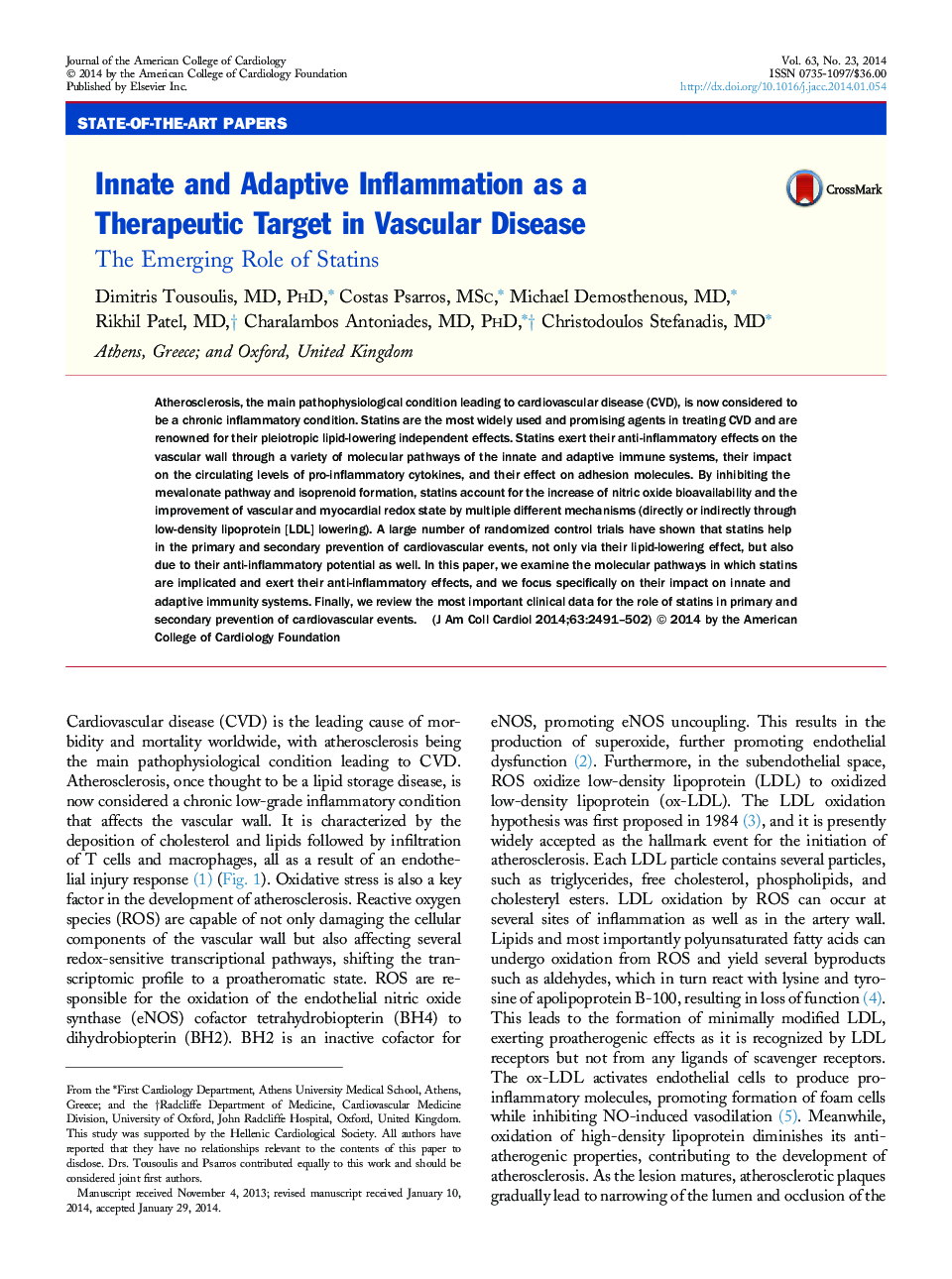| Article ID | Journal | Published Year | Pages | File Type |
|---|---|---|---|---|
| 5983044 | Journal of the American College of Cardiology | 2014 | 12 Pages |
Atherosclerosis, the main pathophysiological condition leading to cardiovascular disease (CVD), is now considered to be a chronic inflammatory condition. Statins are the most widely used and promising agents in treating CVD and are renowned for their pleiotropic lipid-lowering independent effects. Statins exert their anti-inflammatory effects on the vascular wall through a variety of molecular pathways of the innate and adaptive immune systems, their impact on the circulating levels of pro-inflammatory cytokines, and their effect on adhesion molecules. By inhibiting the mevalonate pathway and isoprenoid formation, statins account for the increase of nitric oxide bioavailability and the improvement of vascular and myocardial redox state by multiple different mechanisms (directly or indirectly through low-density lipoprotein [LDL] lowering). A large number of randomized control trials have shown that statins help in the primary and secondary prevention of cardiovascular events, not only via their lipid-lowering effect, but also due to their anti-inflammatory potential as well. In this paper, we examine the molecular pathways in which statins are implicated and exert their anti-inflammatory effects, and we focus specifically on their impact on innate and adaptive immunity systems. Finally, we review the most important clinical data for the role of statins in primary and secondary prevention of cardiovascular events.
